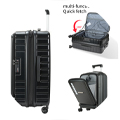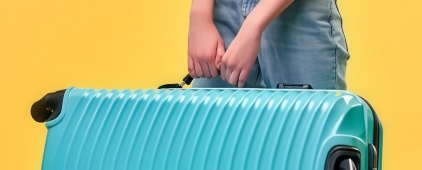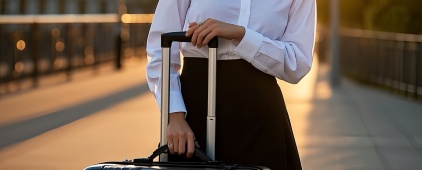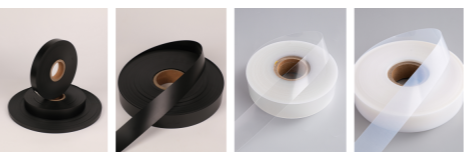How to Waterproof Your Suitcase: A Practical DIY Step-by-Step Guide
How to Waterproof Your Suitcase: A Practical DIY Step-by-Step Guide
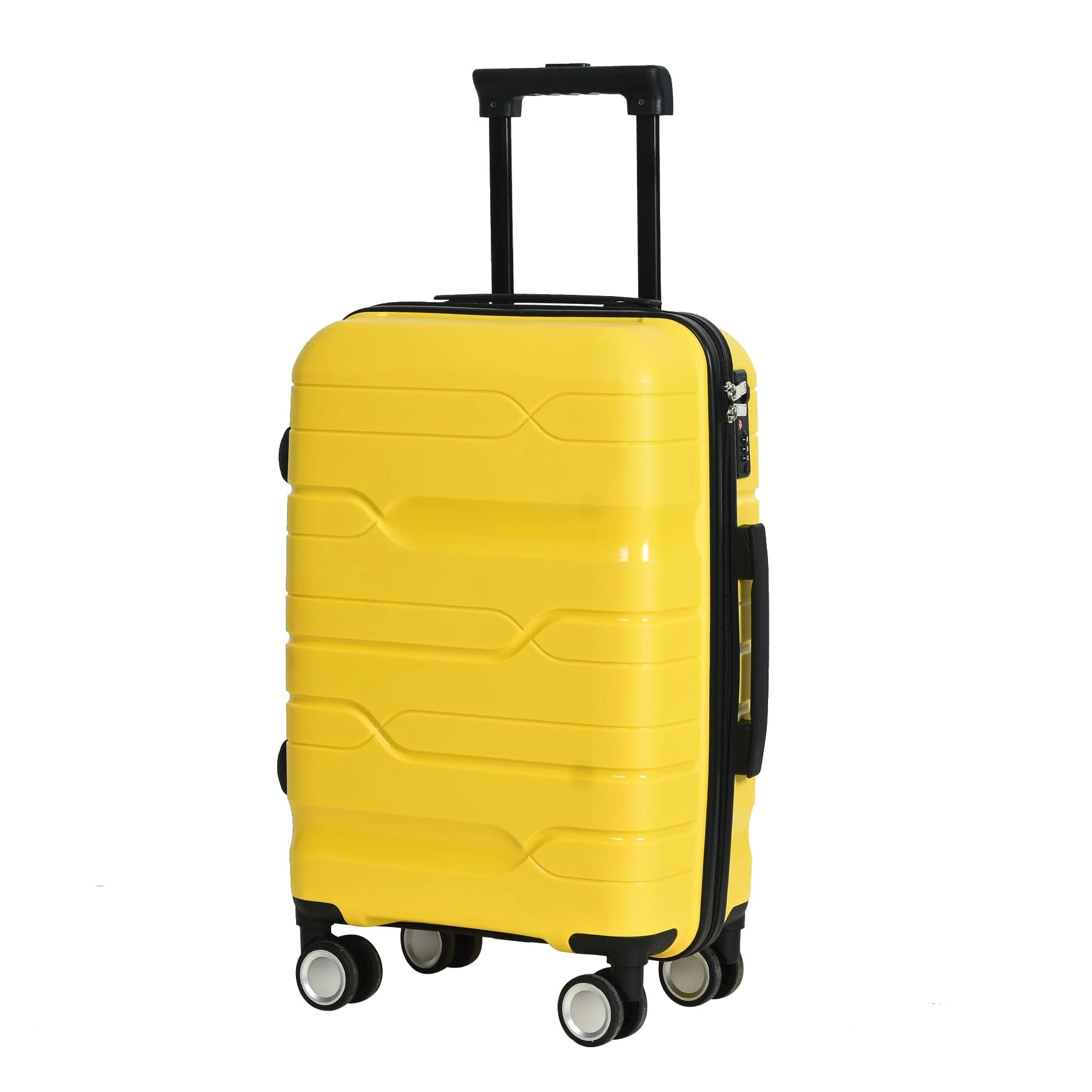
Traveling frequently involves dealing with unpredictable weather conditions. This includes sudden heavy rain or high humidity levels. Protecting your luggage from moisture is crucial. It ensures your belongings remain secure and dry. Waterproofing your travel bag shields your clothing and electronic devices. It also extends its lifespan. Whether you travel frequently or occasionally, mastering this skill helps prevent travel inconveniences. This guide explains the advantages, techniques, and best approaches for water-resistant luggage. This maintains smooth journeys.
What Are the Benefits of Waterproofing Your Suitcase?
Understanding why this matters is essential first. Protecting your possessions from water damage is vital for all travelers.
Protection Against Rain and Moisture
Unexpected rain or high humidity is a common travel challenge. Waterproofing prevents water from penetrating the fabric. This keeps your garments and essential items dry during damp conditions.
Preventing Damage to Electronics and Documents
Many individuals carry laptops, tablets, passports, and important papers in their luggage. These items are susceptible to moisture damage. A water-resistant travel bag serves as a barrier. It safeguards delicate electronics and critical documents from permanent harm.
Enhancing the Durability of Your Luggage
Waterproof coatings repel moisture. They also add a protective shield that minimizes deterioration. This extends your bag’s lifespan. It becomes more resilient against scratches and environmental factors.
Pengteng recognizes these concerns. They provide luggage solutions designed with sturdiness, security, and dependability as priorities. These qualities are essential for contemporary travelers.
Which Types of Suitcases Are Suitable for DIY Waterproofing?
Not all travel bags are equally suitable for waterproofing. Knowing what works best conserves time and prevents damage.
Hard-Shell vs. Soft-Side Suitcases
Hard-shell luggage constructed from durable plastic provides a solid base for waterproof sprays or coverings. Soft bags made from nylon or polyester absorb treatments differently. However, they can still be effectively waterproofed with appropriate products.
Materials That Respond Well to Waterproofing Treatments
Nylon, polyester, canvas, and certain plastics respond effectively to silicone sprays or waxes. Leather might require specialized waterproofing products. These maintain its texture while offering water protection.
Identifying Existing Water-Resistant Features
Some bags already include built-in water-resistant zippers or treated exterior fabric. Examine these features before adding extra layers. You should avoid interfering with existing protection.
Pengteng offers diverse bag types crafted from quality materials. These are compatible with different waterproofing methods. This provides users customization options while maintaining structural strength.
What Materials and Tools Will You Need for DIY Waterproofing?
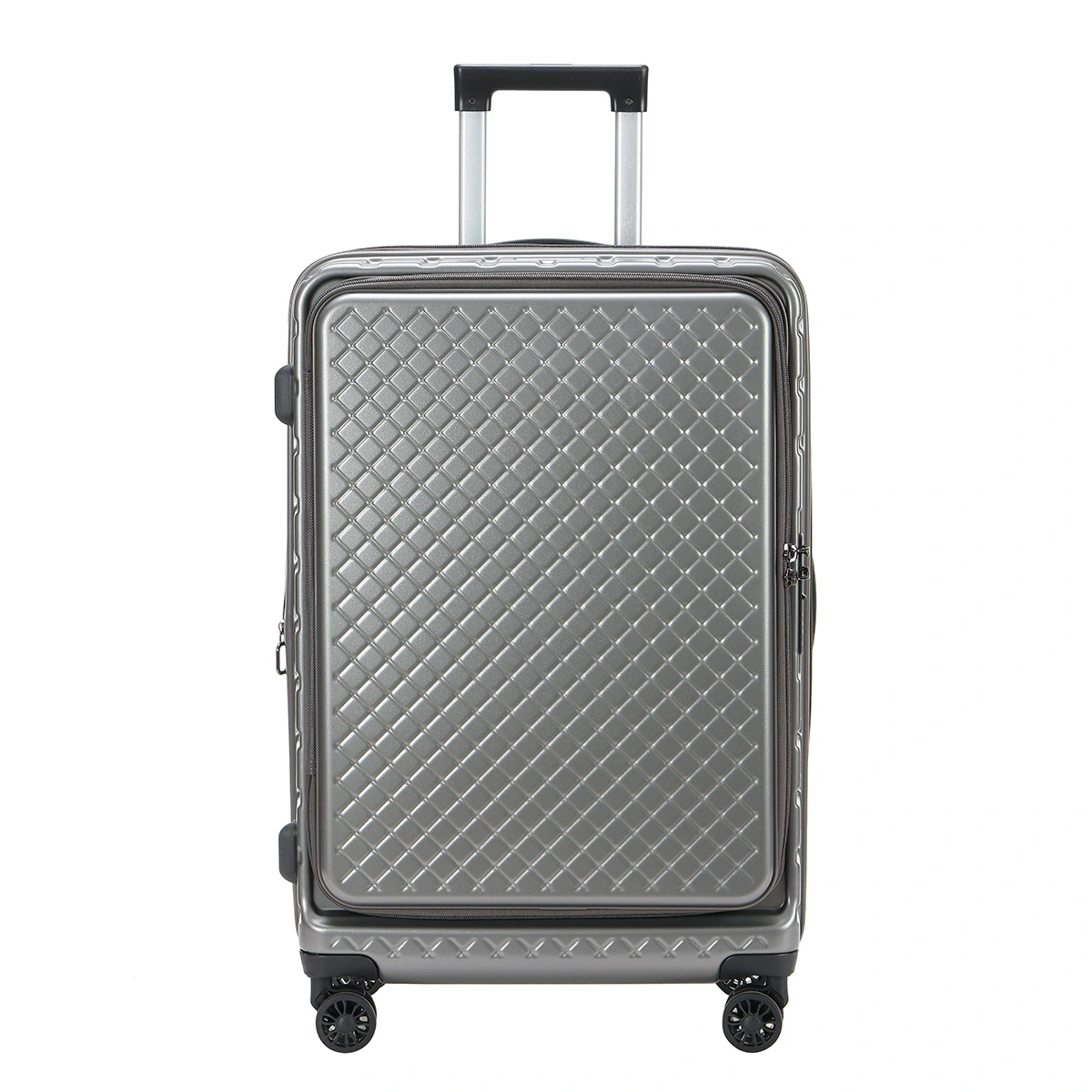
Preparation is fundamental for any DIY project, including waterproofing your luggage.
Essential Waterproofing Products
Common options include silicone sprays, beeswax for fabric surfaces, and liquid sealers for zippers and edges. Select a product matching your bag’s material for optimal outcomes.
Recommended Tools for Application
You’ll need protective gloves, soft cloths for spreading waxes, painter’s tape for masking areas, and possibly a hairdryer to accelerate drying.
Optional Accessories for Added Protection
Consider using rain covers or dry bags inside your luggage as supplementary precautions. These are particularly valuable when carrying electronics or valuables during inclement weather.
Pengteng’s adaptable luggage designs facilitate easy integration of these accessories. This preserves both functionality and appearance after DIY modifications.
How Can You Prepare Your Suitcase for the Waterproofing Process?
Proper preparation ensures better treatment adhesion and longer-lasting outcomes.
Cleaning and Drying the Surface Thoroughly
Begin by wiping the entire exterior with gentle soap and water. Allow it to dry completely before applying any product; residual moisture can trap mold beneath the coating.
Inspecting for Cracks, Tears, or Weak Points
Examine seams, zippers, corners, and handles for existing damage. Repair these sections first using fabric patches or sealants. This prevents water from finding vulnerable entry points later.
Removing or Protecting Hardware and Zippers
Use painter’s tape or plastic wrap to cover metal components like locks. This prevents corrosion or sticky residue accumulation post-treatment.
Pengteng manufactures its luggage with reinforced seams and premium hardware. This reduces vulnerabilities even before users apply additional treatments.
What Are the Step-by-Step Instructions to Waterproof a Suitcase?
After preparing your bag properly, follow these steps:
Applying a Waterproof Spray or Coating
Hold the spray bottle 6–8 inches away. Cover all surfaces evenly, including sides and bottom. Allow 24 hours drying time unless manufacturer instructions specify otherwise.
Sealing Zippers and Seams Effectively
Apply seam sealer along all zipper tracks using a small brush. Permit complete curing before testing zipper movement. For enhanced security, consider zipper covers available at travel stores.
Reinforcing Corners and Vulnerable Areas
Corners frequently endure impact during transit. Strengthen them with an extra spray layer or adhesive patches designed for travel gear.
Pengteng’s precision-engineered luggage already features fortified corners and high-grade zippers. This simplifies enhancement through DIY waterproofing.
How Can You Test If Your Suitcase Is Properly Waterproofed?
Testing is critical before trusting your treated bag on an actual journey.
Simulated Rain or Water Exposure Methods
Use a water-filled spray bottle to simulate rainfall on various bag sections. Alternatively, place it briefly under a light shower while monitoring closely.
Checking Interior Dryness After Testing
Open your bag immediately after water exposure. Verify whether moisture penetrated the interior. Pay special attention to seams and zippers where leaks commonly occur.
Reapplying Sealants if Necessary
If you detect damp spots inside after testing, reapply treatment to those specific areas. Add coats until no leakage occurs during retesting.
Pengteng’s quality commitment ensures fewer weak points in construction. This enhances initial waterproofing effectiveness compared to inferior alternatives.
When Should You Reapply or Maintain the Waterproof Coating?
Even high-quality coatings deteriorate over time due to travel-related wear.
Frequency Based on Travel Conditions
For frequent travelers in wet climates, reapply every 3–6 months based on usage intensity. Occasional users may require only annual touch-ups.
Signs That Indicate Wear or Loss of Protection
Watch for faded surfaces, peeling coatings near seams/corners, or increased fabric absorbency. These indicate reapplication is needed.
Best Practices for Long-Term Maintenance
Store luggage in dry locations when unused. Avoid abrasive cleaners that strip protective layers prematurely. Inspect visually before major trips.
Pengteng designs products for longevity, requiring less maintenance due to superior materials.
Who Is Pengteng and Why Choose Them as Your Luggage Supplier?
Selecting reliable luggage begins with choosing a trusted manufacturer. Pengteng is a leading supplier recognized for craftsmanship.
Overview of Pengteng’s Commitment to Quality Manufacturing
Pengteng emphasizes durability through modern production techniques using robust materials field-tested in actual travel conditions.
Product Range and Customization Capabilities
From compact carry-ons (Standard International Size: 22x14x9 inches) to large check-in bags (over 90 liters), Pengteng offers extensive customization including logo printing, color selection, and interior layout modifications.
Reputation as a Trusted Supplier in the Luggage Industry
With years supplying retailers globally, Pengteng maintains an excellent reputation supported by consistent customer satisfaction, blending innovation with traditional craftsmanship.
Conclusion
Waterproofing your travel bag extends its lifespan. It also protects valuable contents from moisture-related damage during trips. By understanding suitable materials, preparing thoroughly before application, and selecting durable manufacturers like Pengteng, you ensure stress-free travels anywhere.
FAQs About Waterproofing a Suitcase
Q1: Can I waterproof any type of suitcase?
A: Most luggage can be waterproofed using suitable products for their material. However, delicate fabrics like leather need specialized treatments incompatible with standard sprays or waxes.
Q2: Will waterproofing affect the appearance of my suitcase?
A: Some products might slightly darken fabric surfaces. Typically, no significant visual change occurs if applied correctly following manufacturer guidelines.
Q3: How long does a waterproof coating last?
A: With regular use, coatings generally last 3–12 months depending on climate exposure and travel frequency. Proper storage extends effectiveness.


